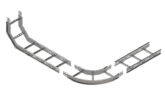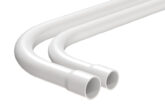
From July this year installers need to check that cables under the Construction Products Regulation are clearly labelled with the fire class rating. The experts at BASEC tell us more about how this will affect you.
The British Approvals Service for Cables (BASEC), a Construction Products Regulation (CPR) Notified Body (2661) recognised across Europe, has launched an educational ‘Electricians Guide to CPR’, to help electricians understand the implications of the new EU legislation when it becomes mandatory for cable suppliers on 1st July.
Over the last year, the direct impact of CPR has been on construction cable manufacturers, importers and distributors supplying any type of cable that is intended to fit permanently into the structure of a building, including power distribution, final circuit wiring, control and instrumentation and data communications cables (copper and optical). It has demanded that new cable testing/certification requirements be completed, as well as CE marking requirements.
With the deadline for compliance only a couple of months away, cable under the scope of CPR must be classified and CE marked to be legally sold after 1st July. Installers, therefore, need be aware of what to look for and advise customers accordingly.
“Electricians may already be seeing the impact of CPR on the cable industry,” says Dr Jeremy Hodge, Chief Executive at BASEC. “The new regulation lays down harmonised rules for the marketing of construction cable products in the EU, so it’s advised that electricians understand the CPR classifications ‘according to how construction cables react in a fire’ when quoting for jobs and collecting it from wholesalers. There are seven classes of cables, ranging from Aca-Fca.”

CPR affects all cables including PVC and LSHF armoured, flat twin and earth and single core, and many others such as data and optical cables – whether they’re made to a recognised design standard or not. If the cable is fixed into the fabric of the building, or enters a building, then it is within the scope of CPR. However, CPR doesn’t cover cables that aren’t fixed, such as accessory flexes, patch cables or apply to those only buried in the ground away from buildings. Unclassified and unlabelled cable may soon cease to be legally sold.
“You should initially expect to see a substantial amount of Class Eca cable on the market as this is the entry point for the cable manufacturers, plus higher class cable for special applications,” continues Dr Hodge.
“For purchases after 1st July, the wholesaler is responsible for ensuring that the cable has the appropriate classification and CE mark labelling before it’s offered for sale. It’s likely there will be a challenging and uncertain environment for cable supply in Europe over the next few years. We hope our Electricians Guide to CPR helps to aid understanding of the new legislation for the electricians who are using cable on a day-to-day basis.”
Looking ahead to a post-Brexit agreement, future requirements for CPR for cables, and CE marking in general, is currently unknown and will largely depend on the UK membership of the Single Market or the European Economic Area (EEA).
GET YOUR GUIDE TO CPR!
The BASEC Electricians Guide to CPR is formatted in an easy to understand Q&A format and includes a diagram of a typical CPR regulation reel/coil label to show the ‘reaction to fire’ class of performance. It’s free to download from the BASEC website (www.basec.org.uk) and a webinar for electricians will be announced in the future.








